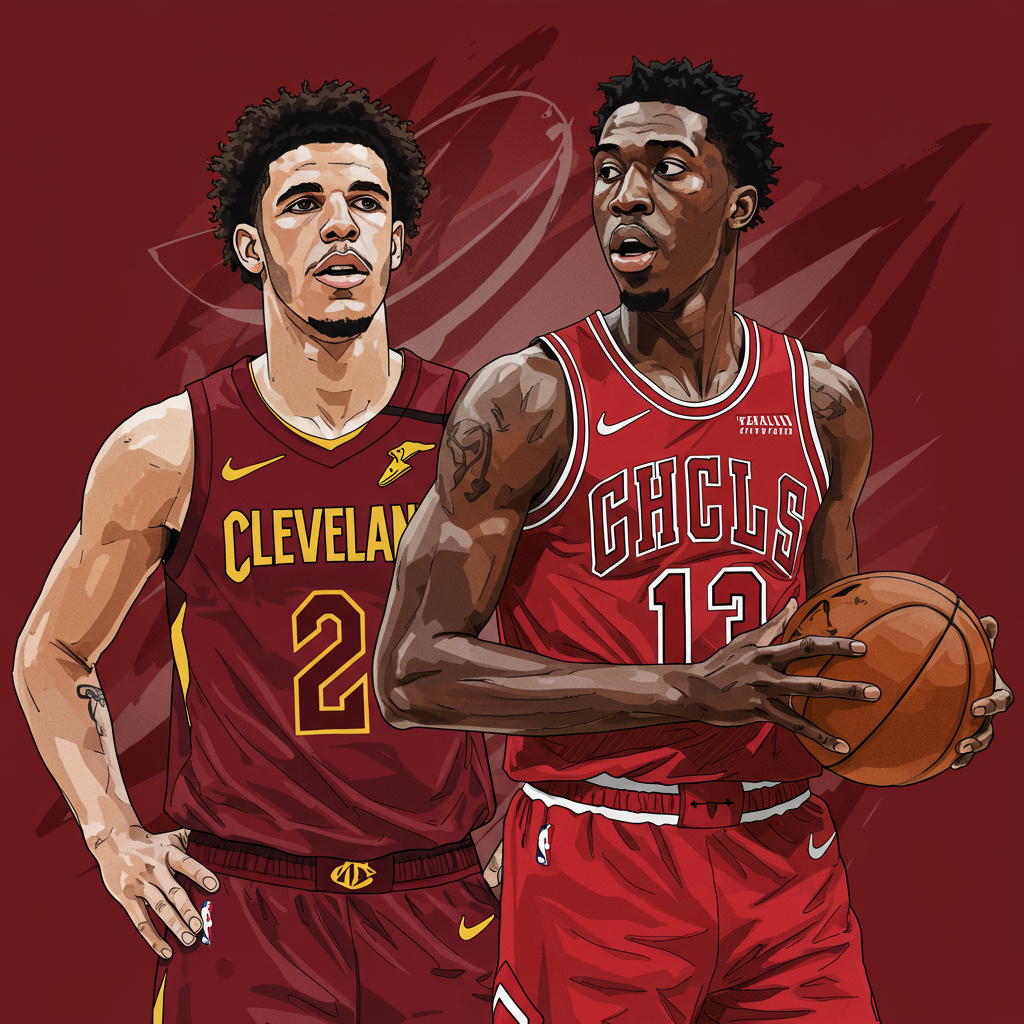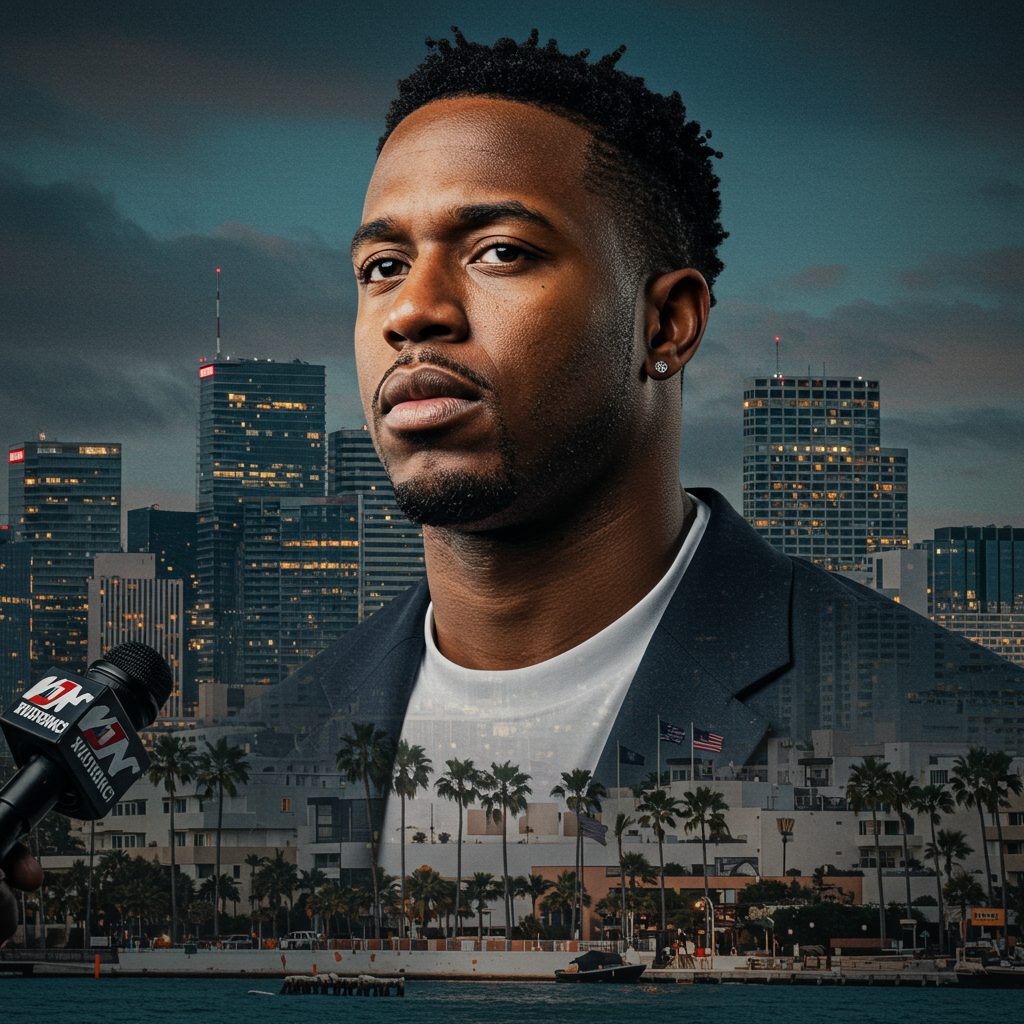The Cleveland cavaliers are actively reshaping their roster, reportedly finalizing a significant trade to acquire Chicago Bulls guard lonzo Ball. This move, confirmed by sources and widely reported, sends Cavs swingman Isaac Okoro to Chicago in a straight-up exchange. The agreement was reached on June 28, but the deal cannot officially be completed until July 6, aligning with the NBA’s moratorium period protocols. This high-stakes transaction underscores Cleveland’s commitment to building a championship contender while navigating the complex financial landscape of the new Collective Bargaining Agreement.
Cavaliers Fortify Backcourt Depth
Cleveland’s front office has been exploring options to enhance their on-court production and playoff viability, particularly seeking an upgrade at the guard position. Sources indicate the team had been actively shopping Isaac Okoro, their No. 5 overall pick from the 2020 NBA Draft, for several weeks, aiming for a player with a comparable salary but a more impactful offensive profile or greater positional flexibility. Lonzo Ball emerges as the player the Cavaliers believe fits this criteria, offering a distinct skillset that complements Cleveland’s existing core.
Ball, a former second-overall pick himself, is known for his exceptional court vision, high basketball IQ, and defensive tenacity. At 6’6″, he provides multi-positional defense and operates as a cerebral secondary playmaker, traits the Cavaliers value for increasing lineup flexibility and reducing on-court fit concerns. His ability to initiate offense and create for others is a stark contrast to Okoro’s primary defensive focus. Furthermore, Ball has significantly improved his perimeter shooting throughout his career, boasting a 36.2% career mark from three-point range. During the 2021-22 season, before being sidelined by injury, he was particularly effective, hitting a career-best 42.3% on high volume (7.4 attempts per game).
Lonzo Ball’s Injury History: The Major Gamble
Acquiring Lonzo Ball, however, comes with a considerable caveat: his extensive injury history. Ball’s career was nearly derailed by a severe left knee injury that necessitated multiple surgical procedures, including a complex meniscus and cartilage transplant in March 2023. These injuries caused him to miss two consecutive NBA seasons entirely (2022-23 and 2023-24).
Despite these significant setbacks, Ball successfully returned to competitive play last season with the Bulls. He appeared in 35 games, demonstrating he could still perform at a high level, averaging 7.6 points, 3.4 rebounds, and 3.3 assists. He did, however, miss time late in the season due to a sprained right wrist, serving as a reminder that health will remain the primary concern surrounding his future performance and availability. For the Cavaliers, this trade represents a calculated risk, betting on Ball’s ability to stay healthy and consistently contribute after missing so much time.
Okoro’s Diminished Role in Cleveland
Isaac Okoro, meanwhile, saw his role with the Cavaliers decrease significantly, particularly in the most recent season. After signing a three-year, $33 million contract extension ($11 million annually) in September 2024, Okoro was expected to be a key piece. However, described primarily as a one-dimensional player known for his rugged defense, his offensive limitations and fit alongside other players became more apparent.
Last season, Okoro averaged career-lows in points (6.1), minutes (19.1), rebounds (2.4), and steals (0.6). His diminished impact was particularly noticeable during Cleveland’s playoff run. In the first-round series against Miami, he logged only 45 total minutes. Even when injuries affected other guards like Darius Garland (toe) and wing players like De’Andre Hunter (dislocated thumb), Okoro remained a rotational afterthought, averaging just 16.6 minutes in the subsequent series against Indiana. Given his reduced playing time and offensive struggles relative to his $11 million salary, justifying his contract figure on the roster became increasingly difficult for the Cavaliers.
Financial Maneuvering and CBA Impact
Beyond the on-court fit, the trade carries important financial implications for the Cavaliers, a team projected to operate in the second apron territory under the new Collective Bargaining Agreement. Lonzo Ball is set to earn $10 million this coming season, with a $10 million team option attached to his contract for the 2026-27 campaign.
Compared to Okoro’s $11 million salary for next season (and $11.8 million the year after), the Cavaliers save approximately $1 million in raw salary in the immediate term. While seemingly small, this difference is projected to result in significant savings against the luxury tax bill, which is heavily penalized, particularly at the second apron. The Ball contract structure, with the team option, also provides Cleveland with significant financial flexibility moving forward, allowing them to potentially move on without future salary commitments if Ball’s health issues persist or he doesn’t perform as hoped.
This trade is emblematic of the difficult financial decisions many teams face under the new CBA, which is designed to limit teams’ ability to retain high-cost rosters. Examples like the Boston Celtics making cost-cutting trades or the Denver Nuggets parting with Kentavious Caldwell-Pope after winning a championship highlight this new reality. The Cavaliers are also bracing for potential departures in free agency, with unrestricted free agents Ty Jerome (a Sixth Man of the Year finalist) and Sam Merrill expected to garner outside interest. Both players are liked by the organization, but retaining them might prove fiscally challenging. Ball’s arrival adds depth and playmaking, potentially mitigating the impact if one or both guards depart in free agency, which begins just after the trade agreement date.
Strategic Fit and Future Outlook
For the Cavaliers, acquiring Lonzo Ball is a calculated move aimed at enhancing their primary guard rotation and adding a different dimension to their offense and defense. While Darius Garland is the undisputed starting point guard, Ball’s skillset allows him to play on or off-ball, potentially slotting in as a backup point guard, playing alongside Garland or Donovan Mitchell in certain lineups, or even filling minutes if Garland’s recovery from toe surgery extends into the season.
Ball’s reputation as a “feisty multi-positional defender” provides a significant defensive boost, offering the ability to guard multiple positions on the perimeter. This defensive versatility, combined with his playmaking and improved shooting, provides Cleveland with a more dynamic option than Okoro, whose defensive contributions were highly valued but whose offensive limitations became a bottleneck.
From the Chicago Bulls’ perspective, acquiring Isaac Okoro brings them a younger player (24 years old) with five seasons of NBA experience and recognized defensive skills. Okoro’s contract runs for two more years, but the move has drawn criticism from some analysts who question the Bulls’ strategy. Comments suggest the Bulls could have potentially received more valuable assets, including draft picks, for Ball in the past but instead chose to extend him before eventually trading him for a player with potential but limited offensive impact. The move is seen by some as similar to the Bulls’ recent one-for-one swap of Alex Caruso for Josh Giddey, focusing on acquiring young players over accumulating valuable draft capital for a rebuilding effort.
The trade represents a potential upgrade for Cleveland if Ball can remain healthy, offering a higher offensive ceiling and more dynamic playmaking/defense than Okoro provided. For Chicago, they acquire a young, defensively capable wing, but the move raises questions about their asset management strategy and timeline. The success of the Cavs’ championship chase could hinge significantly on Ball’s ability to overcome his injury history and consistently contribute to a team with elevated expectations.
Frequently Asked Questions
Why did the Cleveland Cavaliers trade Isaac Okoro for Lonzo Ball?
The Cavaliers traded Isaac Okoro to acquire Lonzo Ball primarily to upgrade their guard depth and add playmaking and defensive versatility. While Okoro was a strong perimeter defender, his offensive limitations and diminishing role, particularly in the playoffs, made his $11 million annual salary difficult to justify. Ball offers elite court vision, secondary playmaking, multi-positional defense, and improved perimeter shooting. His contract, with a team option, also provides financial flexibility and helps the Cavaliers save significantly on luxury tax payments compared to Okoro’s deal under the new CBA rules.
What are the specific contract details for Lonzo Ball with the Cavaliers?
Lonzo Ball is set to earn $10 million for the upcoming 2025-26 NBA season. His contract also includes a team option for the 2026-27 season, also worth $10 million. This structure allows the Cavaliers financial flexibility, as they are not committed to his salary beyond the first year if health or performance issues arise. Reports also indicate his contract includes an Exhibit 3 clause related to prior injuries, which can provide some protection for the team.
How significant is Lonzo Ball’s injury history as a concern for the Cavaliers?
Lonzo Ball’s injury history is the most significant concern for the Cavaliers. He missed two full seasons (2022-23 and 2023-24) due to a severe knee injury that required multiple surgeries, including a major cartilage transplant. While he returned last season and played 35 games, he still dealt with a wrist issue that limited his availability. His ability to stay healthy and consistently contribute over a full NBA season and the demands of playoff basketball is the primary “big if” surrounding this acquisition and will largely determine the success of the trade for Cleveland.
The trade of Isaac Okoro for Lonzo Ball marks a pivotal moment for both the Cleveland Cavaliers and Chicago Bulls as they navigate the evolving landscape of the NBA, balancing on-court needs with financial realities under the restrictive new Collective Bargaining Agreement. For Cleveland, it’s a high-upside swing on a talented player with significant injury concerns, potentially adding a critical piece for their championship aspirations while saving luxury tax dollars. For Chicago, it signals a continued focus on acquiring younger players, though the specific asset management strategy employed in this deal has drawn scrutiny. All eyes will now be on Lonzo Ball’s health and how both players integrate with their new teams when the deal becomes official.


